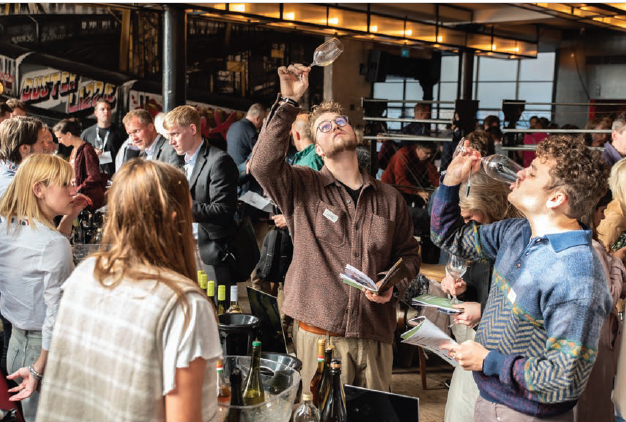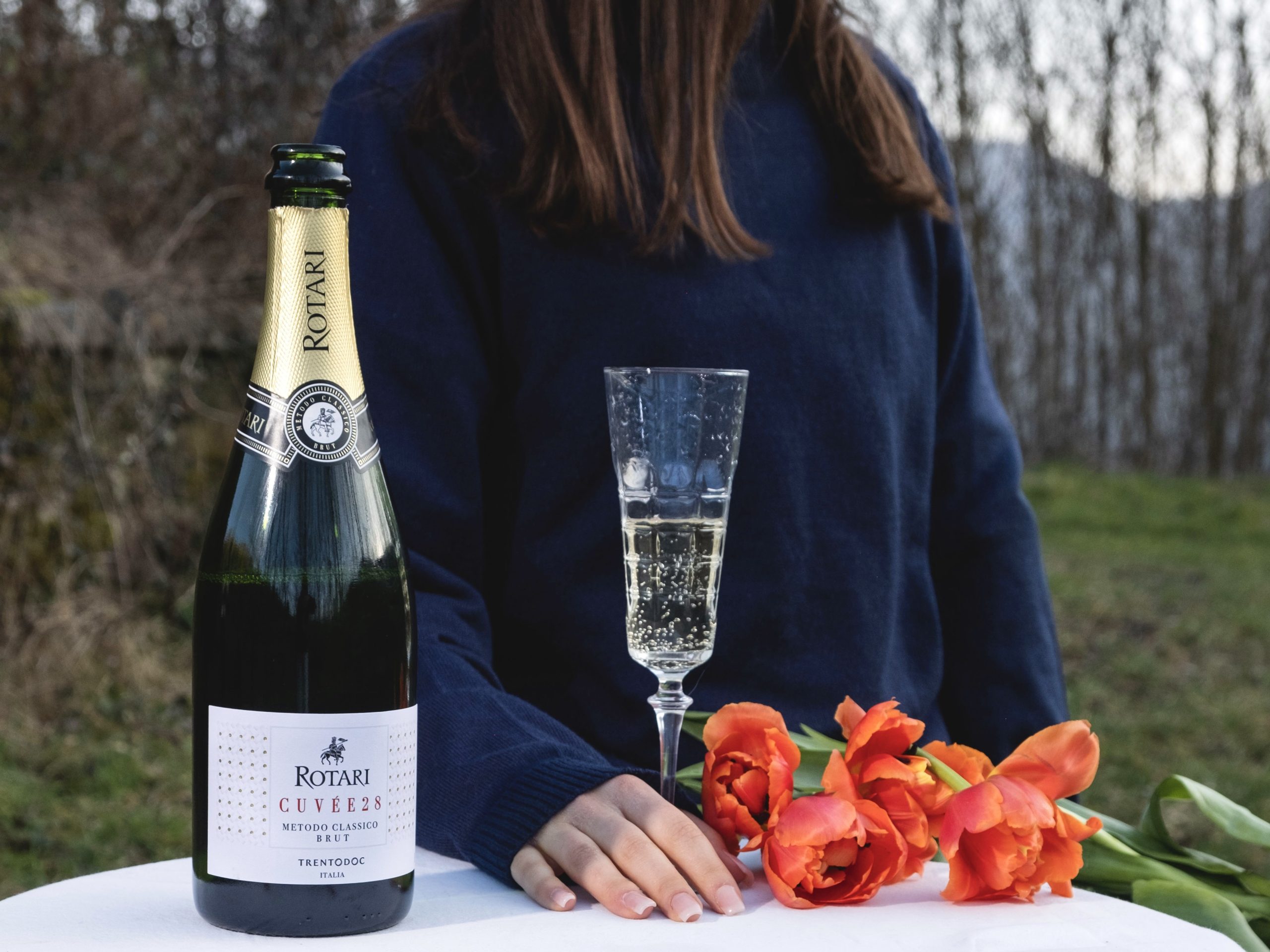St Estèphe en primeur 2022: full tasting notes
db’s Bordeaux correspondent Colin Hay presents his tasting notes from St Estèphe, where he find very high appellation typicity and some excellent wines. It seems that 2022 has been a terroir-maximising vintage, nowhere more so that in St Estèphe.

A note on the ratings
This year, as for the 2021 vintage before it, I have decided to provide an indicative rating for each wine alongside the published comment. All such comments and ratings are necessarily subjective (they cannot be anything else, when one thinks about it). I would urge you to look at the two together and, if anything, to privilege the comment over the rating. My aim is more to describe the wine in the context of the vintage, the appellation and recent vintages of the same and similar wines, rather than to judge the wine per se.
The ratings, of course, reflect my subjective evaluations and relative preferences between wines. Your palate is likely differ from mine. I hope that my comments give you at least enough information to be able to recalibrate my ratings and, in so doing, to align them more closely to your palate. To give an example: if the idea of the ‘new classicism’ leaves you cold, you may well wish to discount the (typically high) ratings I have given to wines described in such terms.
2022 is, of course, a far from entirely homogeneous vintage – and, consequently, my ratings span a considerable range (from the very top of the scale downwards). I see little interest, either for the consumer or the producer, in publishing very low scores. Consequently, I have decided not to publish scores for wines that I have rated below 90 (here the range 89-91). Where no rating is published, the wine would have scored 88-90 or below.
Finally, élevage is likely to be very important in determining the quality in bottle of these wines (like 2021 and rather more so than in recent vintages). I am no soothsayer and cannot predict how that will turn out. All en primeur ratings should be treated with caution and taken with a certain pinch of salt.
Detailed tasting notes
- Le Boscq 2022 (St Estèphe; cru bourgeois exceptionnel). This is very impressive indeed and brilliantly expressive of its St Estèphe identity. Dark fruited, slightly spicy, full, rich, plump and really just a lovely mouthful of bright dark berries – a little briary and a little wild as they should be. There’s a hint of charcuterie, game and wood smoke, but this is all about the fruit. A little dark chocolate and a touch of graphite pencil shavings too. The tannins are considerable, but so friendly and they just seem to pick out the details over the very long evolution of the wine to the horizon. A great advert for the vintage and the appellation. 92-94.
- Calon Ségur 2022 (St Estephe; 70% Cabernet Sauvignon; 24% Merlot; 16 Caberent Franc; 1% Petit Verdot; pH 3.8; 15% alcohol; 14% press wine; tasted at the property). Very open, expressive and aromatically engaging . Pink roses, pink peppercorns enrobing red and darker berry fruit: raspberry and loganberry. An enticing suggestion – really just an undernote – of wild thyme. We find, too, graphite, a little candlewax, cordite and a flinty minerality. On the palate this is quite open-textured, limpid and layered with quite distinct beady St Estèphe tannins. Liquorice and a little toasted brioche. A touch of saffron too. I find a slight sensation of heat on the finish, though there is also a lovely fresh minty leafiness. 94-96.
- Capbern 2022 (St Estephe; 15%; tasted at Calon-Ségur). Juicy. Sweet on the nose and the palate. Plump. Fresh and limpid. Tender and layered. Bright. There’s a good dollop of graphite too. Lovely chewy tannins on the finish. Overall, this is plump, almost chubby with a pleasing sense of balance and harmony. 92-94.
- Cos d’Estournel 2022 (St Estèphe; 61% Cabernet Sauvignon; 37% Merlot; 1% Cabernet Franc; 1% Petit Verdot; tasted at the property). Cool, elegant and gracious, with that little hint of cinnamon and assorted cracked Szechuan and other peppercorns that tells you where you are, lovely notes of graphite and then cedar that fill the glass and accompany so enticingly the black cherry and briary fruit. This has lovely leafy notes and herbal undertones – it’s almost a little wild and feels very natural. There’s cinnamon and nutmeg too, but this is not the exotically spiced wine of a decade ago. In the mouth this is plunge-pool cool and it has a lovely subtle hint of sweetness carried by a wave of juicy fresh fruit. The mid-palate is succulent and svelte and sinuous with more eddies and ripples of fresh berry fruit. Very sapid and super bright and explosively engaging and energetic. But Cos in 2022 is also very elegant, with lots of finesse. It has less of the swagger of old and more of the purity and focussed precision of today. Excellent. 96-98.
- Cos Labory 2022 (St Estèphe; tasted at the UGC press tasting and then at the end of the tasting at Cos d’Estournel). Recently acquired by Cos d’Estournel. For the 2022 vintage, it’s larger neighbour (the properties are contiguous and were classified as one in 1855) was involved only in the blending. They form part of the same hill on the border of the plateau – Cos d’Estournel being the northern and western parts, Cos Labory the southern and eastern flanks. This has a pure dark berry fruit with a lot of cassis and bramble and is quite leafy too. It’s slightly briny and has that iodine, sea-spray minerality of the northern Médoc, a very dark berry fruit profile and a little note of wild heather. The tannins remain a little abrasive (less so when re-tasted at Cos a week later) and this still feels a little old school but I think we can expect to see great things here over the next few vintages and this is a already a start. Chewy and authentically of St Estèphe – with a cooler profile than its new stablemate as we might expect from the northern-facing parts of the plateau. 91-93.
- Le Crock 2022 (St Estèphe; cru bourgeois exceptionnel; 44% Cabernet Sauvignon; 40% Merlot; 11% Cabernet Franc; 5% Petit Verdot; pH 3.4; a final yield of 33.4 hl/ha; 14.7% tasted a second time at Leoville-Poyferré). Very dark-hued in the glass, but limpid and translucent too. Elegant, refined and a little introvert aromatically at first, even when tasted the second time. Graphite, a loamy earthy minerality, a hint of tinderbox and then the dark, predominantly cherry, fruit. As this aerates the cedar elements arrive, bringing with them more of the wild northern herbal notes and even a subtle hint of sea-spray and iodine. There’s even a touch of florality – lavender and violet. Nicely composed, intense in and through the mid-palate and very long. Bright and crunchy fruit. Quite chewy on the finish. A notable success in the vintage. 92-94.
- Dame de Montrose 2022 (St Estèphe; 71% Cabernet Sauvignon; 23% Merlot; 5% Petit Verdot; 1% Cabernet Franc; tasted at Montrose). Dark finger-staining briary hedgerow fruits – blackberries, mulberries and brambles – plump, juicy raspberries and loganberries. There’s fabulous fruit precision – this is a little like a still life painting in terms of detail but its dynamic and vibrant, almost pulsating in its vitality at the same time. There’s a slightly hint of wood smoke and toast and that self-same leafy freshness, with just a touch of graphite that one finds with Tronquoy. Wild and rather special. A reliably great second wine. 92-94.
- Frank Phélan 2022 (St Estèphe; 80% Cabernet Sauvignon; 20% Merlot; a final yield of just 28hl/ha; pH 3.9; IPT 85; 14% alcohol). Clear, lifted, bright and quite pure fruited. Nice and peppery and with lot of salinity too, a pleasingly rocky sense of minerality. Briary fruit – very dark and autumnal and crunchy (the French word is croquant and has the benefit of being onomatopoeic). I like the slight sense of austerity here which is very St Estèphe. This has a tight frame, finely chiselled by the tannins with a good structure and impressively glacial evolution over the palate. A compact and slender finish where the salinity arrives. A great success for the vintage. 92-94.
- Haut Marbuzet 2022 (St Estèphe). Less oaky than it used to be with bramble, blackberry and plum skin notes, a little walnut shell and graphite. Wild thyme, sage and marjoram too and maybe a hint of nutmeg. Svelte tannins enrobe and bring detail to the well-defined central core, giving a good sense of delineation and definition. Long and tapering on the finish, where the granularity of the tannins grows a little. Needs a few years in bottle, but very promising. 91-93.
- Lafon Rochet 2022 (St Estèphe; 65% Cabernet Sauvignon, 31% Merlot and 4% Cabernet Franc). A best ever showing from Lafon Rochet. Cedar, pencil-shavings, intense dark crushed and squeezed pure dark berry fruit, a little plum and cherry. Redcurrant leaf – just a hint. Incredibly soft and sapid and juicy, with both a lovely layered sense of structure and that lovely St Estèphe austerity. A wine that feels comfortable in the glass and that seems to have re-found its style. Excellent. 93-95.
Partner Content
- Lilian Ladouys 2022 (St Estèphe; cru bourgeois exceptionnel; 52% Merlot; 40% Cabernet Sauvignon; 8% Petit Verdot; tasted at Ripeau and then at Pedesclaux). For the first time this includes the parcels integrated in 2018 from Clauzet and Tour de Pez. There’s also more Petit Verdot than ever before in the grand vin – and it shines. A little goes a long way and, here at least, a little more goes further! Finally, there’s also more Merlot than usual, due to losses from frost and hail damage. And, as we know, the Merlot is fabulous in 2022. So, unsurprisingly, this is great. Cool, rich, fresh, very bright and crunchy and hyper-limpid and even sinuous on the attack with gracious calcaire tannins bringing depth to the mid-palate and freshness and granularity to the finish. Pure, refined, fresh and beautifully framed by very velvety tannins, but with a reassuring granularity that comes from the terroir (a fair bit of limestone). At times this is almost more redolent of cool terroir St Emilion than St Estephe. Lovely al dente 92-94.
- Marquis de Calon 2022 (St Estèphe; 58% Merlot; 38% Cabernet Sauvignon; 2% Cabernet Franc; 2% Petit Verdot; a final yield of 26 hl/ha; 15% alcohol; tasted at Calon-Ségur). Limpid, plump fruited and quite deep and profound in the juicy mid-palate. The fruit is sapid and crystalline. There’s a hint of wood-smoke intermingling with the mulberry and stone fruit. This is herbal and leafy but just a little sweet. There’s also a slight dip in the mid-palate and the fruis feels a little stretched over the ample frame, but it’s clear and detailed. Finishes with the classic salinity of St Estèphe and just a little note of unsmoked cigar. 92-94.
- Martin 2022 (St Estèphe). Archetypally St Estèphe on the nose, with wood-smoke and gamey elements nicely integrated with the red berry and stone fruit, a little damson too with more air. Lightly textured in the mid-palate for the appellation and the vintage and the fruit, though it is very fresh, feels a little thinly stretched over the frame (unusual in 2022). But there’s plenty to like here and you certainly know where it comes from!
- Meyney 2022 (St Estèphe; 58% Cabernet Sauvignon; 29% Merlot; 13% Petit Verdot; a final yield of 37 hl/ha; pH 3.75; 13.5% alcohol). Rather opulent on the nose, with loads of cedar finely wrapped around the dark stone fruit – damsons and black cherries. The same wild northern Médoc herbal elements that one finds in Le Crock also but here with even more florality. This feels very natural and has loads of terroir character, detail and pixilation from the fine-grained tannins. Excellent, as it so often is, and with its own distinct personality. Not at all ringer for Montrose that it is sometimes assumed to be. 93-95.
- Montrose 2022 (St Estèphe; 66% Cabernet Sauvignon; 25% Merlot; 8% Cabernet Franc; 1% Petit Verdot; tasted at the property). Very similar in style to the fabulous 2020. Pure, cedar-coated glorious dark berry fruit, painted with even more detail than La Dame de Montrose. Gracious, with violets on the palate as well the nose. This exudes total harmony. It is sumptuous, silky and satinous, with fine-grained sheets of microfibre layered one on top of another – with that inter-layer pixilation of the truly great. So incredibly precise. Incredibly purity too. Luminous is the world. Energetic. Vibrant. Dynamic and deceptive as there is a lot of tannin here but it’s so ethereal it’s difficult to register at first. 97-99.
- Ormes de Pez 2022 (St Estèphe; tasted at the UGC press tasting). Pretty and pretty impressive too. This feels very St Estèphe, with a dark briary fruit profile, a little plum skin too, an impressive purity and focused precision and quite a dense and compact mid-palate. Juicy, sapid and very refreshing this is another success from Ormes de Pez. 91-93.
- Pagodes de Cos 2022 (St Estephe; 50% Cabernet Sauvignon; 49% Merlot; 1% Cabernet Franc). Very Cos. Quite sweet fruited. Dense and compact – much more so than G d’Estournel (tasted just before). Tender, tight, taut and multi-layered with very fine layering, impressive depth and those slightly beady-chewy clay tannins of St Estèphe. I like the terroir notes here and I like too the quality of the tannins and the searing freshness. Lots of grip helping to form a pleasing fantail finish. Clean and refreshing. 92-94.
- De Pez 2022 (St Estèphe; tasted at the UGC press tasting and then at Pichon Comtesse de Lalande). Very Pichon Comtesse de Lalande in style, with the most gracious and refined tannins and a dark mirror-pool cool mid-palate. Tasted in more difficult meteorological conditions (at Pichon Comtesse), the salinity and ferrous side are more evident, alongside the plump dark berry and stone fruit. But there’s a lovely natural sweetness here that is captivating. A great success in this vintage and a triumph of texture and elegant precision. Those slightly cold and crumbly ‘St Estèphe’ tannins on the finish remind you where you are, unless you’re seduced by their sheer quality into thinking you’re in Pauillac. Like the excellent 2020 but with less cedar at this stage. 92-94+.
- Phélan Ségur 2022 (St Estèphe; 56% Merlot; 40% Cabernet Sauvignon; 2% Petit Verdot; 2% Cabernet Franc; a final yield of 28 hl/ha; pH 3.8; IPT 96; 14.2% alcohol; aged in oak barrels, 55% of which are new; re-tasted at the UGC press tasting and then at the property with very similar notes). There were significant losses here (around 30%) due to hail damage, reducing significantly the proportion of Cabernet Sauvignon in the final blend (below 50% for the first time in over a decade). The small circumference of the grapes further depleted yields but the resulting wine is spectacular, the quality of the Merlot unprecedented. Parcel vinifcation is taking to another dimension here, with the indigenous yeasts selected at the level of each plot to better maintain the identity of each parcel in the blend. Not perhaps the easiest place to grow grapes in 2022, but you’d have no idea when you taste this fabulous wine. It sings Phélan Ségur, with that lovely gentle wild spring florality reinforced subtly by the oak and with a gorgeous, very harmonious yet complex combination of red and darker berry fruits – a little damson too, mulberries as well. Just a touch of graphite. There’s also a very elegant and classy cassis leafiness with aeration in the mouth. The tannins are extremely polished and refined, the mid-palate sumptuous with great fruit intensity and the finish seems to refocus the wine around the crushed plump juicy raspberry notes. Fabulous. The last wine tasted at the UGC press marathon and a brilliant conclusion. This has an incredibly high IPT but it’s almost imperceptible. Staggering wine-making. 94-96.
- Tour Saint-Fort 2022 (St Estèphe; cru bourgeois). Blackcurrant and raspberry, crushed and blitzed, a little walnut and a hint of mint – and, with more air, lots of wood-smoke. A dense fruit-charged core and slightly rustic tannins (though very svelte on the entry). Fine.
- Tronquoy 2022 (St Estèphe; 59% Cabernet Sauvignon; 35% Merlot; 6% Petit Verdot; tasted at Montrose).This used to be Tronquoy-Lalande and the new name comes with a rather attractive new label. Bright, vertical and lifted aromatically and quite distinctive. This has a wild briary country-side lane autumnal fruit as well as wild blueberries plucked from the moor-side. Wild. Pure. Peppery. Texturally, this has quite a tight frame, narrowing and concentrating the fruit. Consequently, we have great intensity, density and compactness, the mid-palate supercharged with fresh and vibrant juicy sapidity. Superb. Lovely texturally and with great St Estèphe typicity and authenticity. So sapid and with a lovely bright minerality. A gentle natural sweetness too. A very impressive wine resplendent in its new label. 92-94+.
For a summary of the appellation, click here.
Please click link for db’s 2022 en primeur vintage report, along with appellation-by-appellation reviews (links updated as they become available) on Margaux, St Julien, Pessac-Leognan & Graves rouge and blanc, St Estèphe & Haut-Medoc, Pauillac, Pomerol, Saint-Émilion and Sauternes.
Related news
All the medallists from The Rioja Masters 2025




